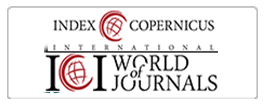Relevansi Nilai Informasi Akuntansi Di Indonesia Berdasar Simple Accounting-Based Fundamental Analysis
DOI:
https://doi.org/10.22219/jaa.v6i1.23000Keywords:
F-score, Parsimony, Readibility, Value-relevanceAbstract
Decreasing the value relevance of accounting information issues cannot be separated from complexity of accounting standards and their implementation. This phenomenon is our motivation to examine whether the valuation model on the prospects of companies that prioritize the parsimony principle by using accounting information also indicates a decrease in the relevance of accounting information in Indonesia. We examined the f-score indicator which is referred to as a simple accounting-based fundamental analysis. This study observed all financial statements of issuers in Indonesia from 2006 to 2019 and their share prices in the secondary market during year t+1.We used multiple regression to estimate the value of r-square in each year of observation. This study could not find any indication of a decrease in the value relevance of accounting information during the observation period based on the r-square which is estimated by the f-score indicator. This finding can be a part of an empirical study that is not only related to value relevance, but also to the topic of accounting information readability.
Downloads
References
Ball, & Brown, P. (2019). Ball and Brown (1968) after fifty years. Pacific-Basin Finance Journal, 53(December 2018), 410–431. https://doi.org/10.1016/j.pacfin.2018.12.008
Ball, R., & Brown, P. (1968). An Empirical Evaluation of Accounting Income Numbers. Journal of Accounting Research, 6(2), 159–178. https://doi.org/10.2307/2490232
Chaudhari, A., & Ghorpade, P. (2020). Forecasting a firm’s position based on Pitroski’s F-score using ARIMA. 2020 International Conference on Data Analytics for Business and Industry: Way Towards a Sustainable Economy, ICDABI 2020. https://doi.org/10.1109/ICDABI51230.2020.9325695
Efretuei, E., Usoro, A., & Koutra, C. (2021). Complex information and accounting standards: Evidence from UK narrative reporting. South African Journal of Accounting Research, 0(0), 1–24. https://doi.org/10.1080/10291954.2021.1970450
Festa, G., Rossi, M., Kolte, A., & Marinelli, L. (2021). The contribution of intellectual capital to financial stability in Indian pharmaceutical companies. Journal of Intellectual Capital, 22(2), 337–359. https://doi.org/10.1108/JIC-03-2020-0091
Francis, J., & Schipper, K. (1999). Have Financial Statements Lost Their Relevance ? Journal of Accounting Research, 37(2), 319–352.
Gimeno, R., Lobán, L., & Vicente, L. (2020). A neural approach to the value investing tool F-Score. Finance Research Letters, 37(November 2019). https://doi.org/10.1016/j.frl.2019.101367
Habibah, U. K., Zuhroh, I., & Sangadah, D. (2022). Fluktuasi Harga Saham Batu Bara: Peran Faktor Spesifik dan Makroekonomi. Jurnal Akdemi Akuntansi, 5(3). https://doi.org/10.22219/jaa.v5i3.21065
Jun, Y. K., Hoon, J. K., Kwon, S., & Lee, S. J. (2021). Fundamental analysis, low accruals, and the accrual anomaly: Korean evidence. Investment Analysts Journal. https://doi.org/10.1080/10293523.2021.1876817
Kothari, S. P., & Wasley, C. (2019). Commemorating the 50-Year Anniversary of Ball and Brown (1968): The Evolution of Capital Market Research over the Past 50 Years. Journal of Accounting Research, 57(5), 1117–1159. https://doi.org/10.1111/1475-679X.12287
Kumsta, R., & Vivian, A. (2020). The financial strength anomaly in the UK: information uncertainty or liquidity? European Journal of Finance, 26(10), 925–957. https://doi.org/10.1080/1351847X.2019.1641532
Lev, B., & Gu, F. (2016). The End of Accounting and the path forward for Investor and Managers. John Wiley & Sons, Inc., Hoboken, New Jersey.
Morais, A. I. (2020). Are changes in international accounting standards making them more complex? Accounting Forum, 44(1), 35–63. https://doi.org/10.1080/01559982.2019.1573781
Nurrohman, A. M., & Hapsari, D. W. (2020). Pengaruh Fraud Pentagon Terhadap Kecurangan Laporan Keuangan Menggunakan F-Score Model (Studi Kasus Pada Perusahaan Sektor Properti, Real Esatate Dan Konstruksi Yang Terdaftar Di Bursa Efek Indonesia). E-Proceeding of Management :, 7(2), 5790–5797.
Pätäri, E. J., Leivo, T. H., & Ahmed, S. (2021). Can the FSCORE add value to anomaly-based portfolios? A reality check in the German stock market. Financial Markets and Portfolio Management. https://doi.org/10.1007/s11408-021-00400-9
Piotroski, J. D. (2000). Value Investing : The Use of Historical Financial Statement Information to Separate Winners from Losers. Journal of Accounting Research, 38(May), 1–41. https://doi.org/10.2307/2672906
Pratiwi, N. R., & Nurbaiti, A. (2018). Analisis Fraud Pentagon Dalam Mendeteksi Kecurangan Laporan Keuangan Dengan Metode F-Score Model (Studi Empiris Pada Perusahaan Pertambangan Yang Terdaftar Di Bursa Efek Indonesia). E-Proceeding of Management, 5(3), 3299–3307.
Putra, A. N., & Dinarjito, A. (2021). The Effect of Fraud Pentagon and F-Score Model in Detecting Fraudulent Financial Reporting in Indonesia. Jurnal Ilmiah Akuntansi Dan Bisnis, 16(2), 247. https://doi.org/10.24843/jiab.2021.v16.i02.p05
Ratmono, D., Darsono, D., & Cahyonowati, N. (2020). Financial Statement Fraud Detection With Beneish M-Score and Dechow F-Score Model: An Empirical Analysis of Fraud Pentagon Theory in Indonesia. International Journal of Financial Research, 11(6), 154. https://doi.org/10.5430/ijfr.v11n6p154
Rossi, M., Festa, G., Kolte, A., & Shams, R. S. M. (2020). The strange case of the jet airways bankruptcy: A financial structure analysis. Journal of Operational Risk, 15(4), 37–52. https://doi.org/10.21314/JOP.2020.245
Sugiana, B., & Surya, B. A. (2013). Implication Of Right Issue Cum And Ex-Date Announcement To The Stock Return (Empirical Study On Indonesia Stock Exchange Period : 2009-2012). The Indonesia Jurnal Of Business Administration, 2(12), 1395–1410.
Suhardianto, N., Subroto, B., & Chandrarin, G. (2017). Mapping Market-Based Accounting Research in Indonesia : Graphics and Guidelines for Future Research. Asian Journal of Accounting Research, 2(1), 18–44. https://doi.org/10.1108/AJAR-2017-02-01-B004
Tinambunan, O. S., & Januarti, I. (2022). Detection Of F-Score Model On Fraudulent Financial Reporting With Fraud Pentagon Theory. Jurnal Reviu Akuntansi Dan Keuangan, 12(1). https://doi.org/10.22219/jrak.v12i1.20605
Utiarahman, L. W. A., & Pongoliu, Y. I. (2021). Analisis Penggunaan Metode Piotroski F-Score dalam Pembentukan Portofolio Optimal pada Saham Indeks Kompas 100 yang Terdaftar di Bursa Efek Indonesia (BEI) Tahun 2019. Jurnal Ilmiah Manajemen Dan Bisnis, 3(3), 158–164. https://doi.org/10.37479/jimb.v3i3.9438
Wahyuni, E. D. (2021). Asimetri Informasi Sebagai Pemoderasi Pengaruh Penerapan Integrated Reporting Terhadap Stock Return. Jurnal Akademi Akuntansi, 4(1), 69–79. https://doi.org/10.22219/jaa.v4i1.14973
Wajin, Y. R. (2019). Analisis Reaksi Pasar Bursa Efek Indonesia Sebelum Dan Sesudah Pengumuman Right Issue Terhadap Abnormal Return Dan Likuiditas Saham. Research Journal of Accounting and Business Management, 3(2), 245–254. https://doi.org/10.31293/rjabm.v3i2.4432
Yakup, W. Y., & Cahyadi, Y. (2016). Analysis of Right Issue Announcement Effect Toward Stock Price Movement And Stock Trading Volume Within Issuer In Indonesia Stock Exchange. Binus Business Review, 7(1), 33–38. https://doi.org/10.21512/bbr.v7i1.1447
Downloads
Published
Issue
Section
License
Copyright (c) 2023 Nugroho Wisnu Murti, Indriyana Widyastuti

This work is licensed under a Creative Commons Attribution-NonCommercial-ShareAlike 4.0 International License.
Jurnal Akademi Akuntansi is licensed under a Creative Commons Attribution-NonCommercial-ShareAlike 4.0 International License.
Authors who publish with this journal agree to the following terms:
- Authors retain copyright and grant the journal right of first publication with the work simultaneously licensed under a Creative Commons Attribution-NonCommercial-ShareAlike 4.0 International License that allows others to share the work with an acknowledgment of the work's authorship and initial publication in this journal.
- Authors are able to enter into separate, additional contractual arrangements for the non-exclusive distribution of the journal's published version of the work (e.g., post it to an institutional repository or publish it in a book), with an acknowledgment of its initial publication in this journal.
- Authors are permitted and encouraged to post their work online (e.g., in institutional repositories or on their website) prior to and during the submission process, as it can lead to productive exchanges, as well as earlier and greater citation of published work (See The Effect of Open Access).
Jurnal Akademi Akuntansi dilisensikan di bawah lisensi Creative Commons Attribution-NonCommercial-ShareAlike 4.0 International.
Penulis yang menerbitkan artikel di jurnal ini menyetujui ketentuan berikut:
- Penulis mempertahankan hak cipta dan memberikan hak jurnal atas publikasi pertama dengan karya yang secara serentak dilisensikan di bawah Lisensi Pengaitan Creative Commons yang memungkinkan orang lain untuk berbagi karya dengan pengakuan atas karya penulis dan publikasi awal dalam jurnal ini.
- Penulis dapat masuk ke dalam pengaturan kontrak tambahan yang terpisah untuk distribusi non-eksklusif versi karya jurnal yang diterbitkan (misalnya, mempostingnya ke repositori institusional atau mempublikasikannya dalam sebuah buku), dengan pengakuan publikasi awalnya di jurnal ini.
- Penulis diizinkan dan didorong untuk memposting pekerjaan mereka secara online (misalnya, di repositori institusional atau di situs web mereka) sebelum dan selama proses pengajuan, karena dapat mengarah pada pertukaran produktif, serta kutipan pekerjaan sebelumnya dan yang lebih besar (Lihat Pengaruh Akses Terbuka).
























